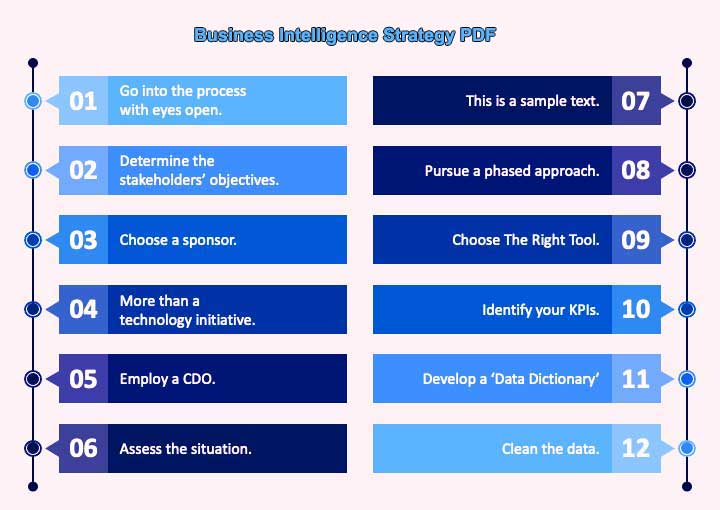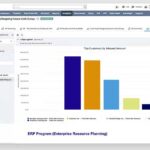The Best Fluffy Pancakes recipe you will fall in love with. Full of tips and tricks to help you make the best pancakes.
Crafting an Effective Business Intelligence Strategy: A Comprehensive Guide in PDF Format
In the dynamic landscape of modern business, the ability to make informed decisions is a cornerstone of success. A well-defined Business Intelligence (BI) strategy serves as the compass guiding organizations toward data-driven insights and strategic actions. This comprehensive guide, presented in PDF format, explores the intricacies of formulating an effective Business Intelligence Strategy. From defining objectives to implementation considerations, this document aims to empower businesses with the knowledge needed to harness the full potential of BI.

Understanding the Essence of Business Intelligence Strategy
1. Defining Strategic Objectives: At the core of a robust BI strategy lies the definition of strategic objectives. Clearly outlining what the organization aims to achieve with BI sets the foundation for subsequent decision-making, resource allocation, and performance measurement.
2. Aligning BI with Organizational Goals: Effective BI is not a standalone entity; it aligns seamlessly with organizational goals. The strategy should articulate how BI initiatives contribute to achieving broader business objectives, ensuring synergy between data-driven insights and corporate ambitions.
3. Data Governance and Quality Assurance: A BI strategy is only as reliable as the data it relies on. Establishing robust data governance frameworks and ensuring data quality assurance are critical components. This involves defining data ownership, implementing data quality checks, and maintaining data integrity across the organization.
Key Components of a Business Intelligence Strategy
4. Technology Infrastructure: Selecting the right technology infrastructure is pivotal. The BI strategy PDF should detail the technologies, tools, and platforms that will support the organization’s data analytics initiatives. Considerations include scalability, compatibility, and the ability to integrate with existing systems.
5. Data Collection and Integration: Efficient data collection and integration are essential for BI success. The strategy should outline how data from disparate sources will be collected, harmonized, and integrated to provide a unified view for analysis.
6. Analytics and Reporting Framework: An effective BI strategy delineates the analytics and reporting framework. This includes defining key performance indicators (KPIs), choosing appropriate analytics tools, and establishing reporting mechanisms that cater to various stakeholder needs.
7. User Training and Adoption: BI is most impactful when embraced by users across the organization. The strategy should outline comprehensive user training programs, ensuring that employees at all levels are equipped to leverage BI tools for informed decision-making.
Implementation Considerations for a Successful BI Strategy
8. Phased Implementation Approach: Implementing BI is a journey, not a sprint. The strategy PDF should articulate a phased implementation approach, allowing the organization to gradually adopt BI capabilities, address challenges, and realize incremental value.
9. Continuous Monitoring and Evaluation: BI is dynamic, and the strategy should emphasize the importance of continuous monitoring and evaluation. Regular assessments of BI performance, user feedback, and evolving business needs contribute to the ongoing refinement of the strategy.
10. Security and Compliance Measures: Protecting sensitive business data is paramount. The strategy should outline robust security measures and compliance protocols to ensure that BI initiatives adhere to industry regulations and safeguard against data breaches.
The PDF Advantage: Accessibility and Portability
Presenting the Business Intelligence Strategy in PDF format offers distinct advantages. PDFs are universally accessible, ensuring that stakeholders can view, share, and print the document across different platforms and devices. The format also preserves the document’s original formatting, maintaining a professional and polished presentation.
In Conclusion: Empowering Decision-Making through BI Strategy
In conclusion, a well-crafted Business Intelligence Strategy, presented in the convenient PDF format, serves as a guidepost for organizations navigating the data-driven landscape. By understanding the core components, addressing implementation considerations, and leveraging the accessibility of PDFs, businesses can embark on a journey of informed decision-making, strategic insights, and sustained success in the dynamic business environment.



